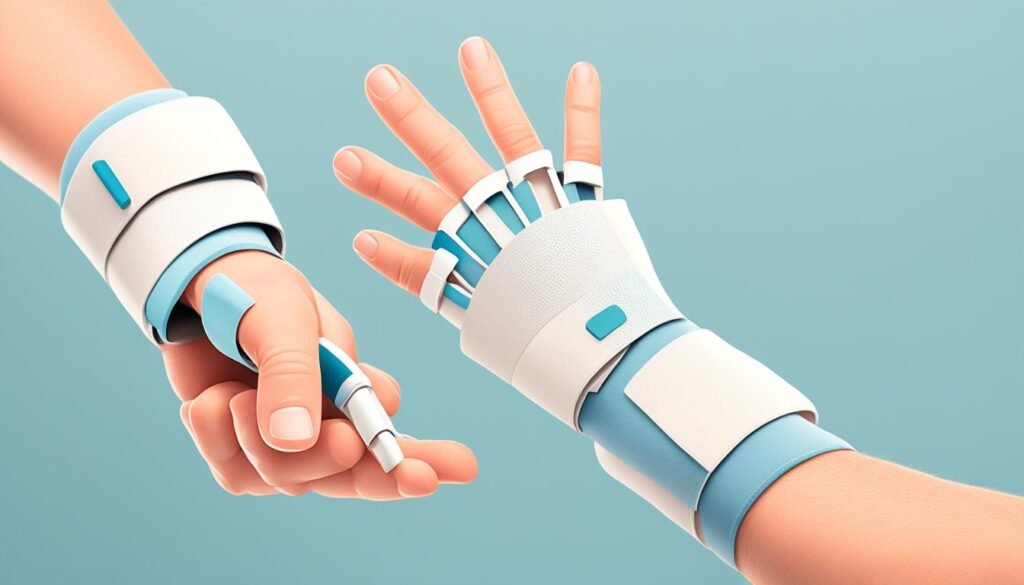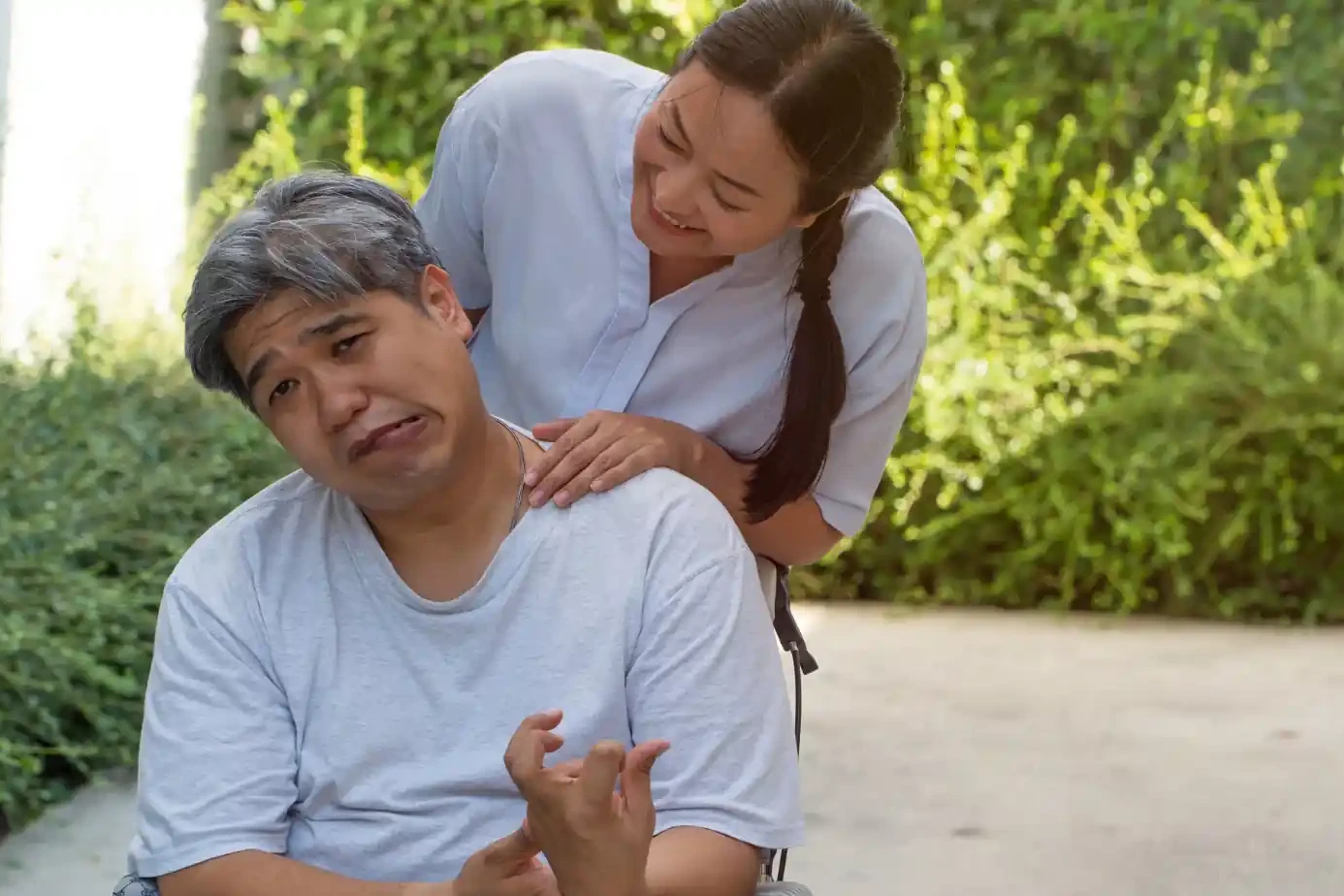Are your fingers tingling? Do your wrists feel sore after a long day at work? If yes, you might be struggling with carpal tunnel syndrome. This condition causes a lot of discomfort and can affect your daily life. But here’s the good news: you don’t always need surgery to feel better. There are natural ways to manage it from the comfort of your home.
In this blog, we will explore proven methods for carpal tunnel pain relief without surgery. You’ll learn about easy lifestyle changes, home remedies, and more to help you heal naturally. So, let’s begin your journey to pain-free wrists.
Table of Contents
ToggleWhat is Carpal Tunnel Syndrome?
Carpal tunnel syndrome happens when the median nerve gets squeezed at the wrist. This nerve travels through a narrow space in your wrist called the carpal tunnel. When the tunnel gets tight, the nerve feels the pressure, leading to pain, tingling, and weakness in your hand.
What causes carpal tunnel syndrome in the first place?
The main reasons why people get this condition include:
- Repetitive hand movements like typing or assembly work
- Poor hand posture or bad wrist position
- Health problems like diabetes or arthritis
- Pregnancy-related fluid retention
According to the NIH and the American Academy of Orthopaedic Surgeons (AAOS), median nerve compression is the core issue behind carpal tunnel.
Who is most at risk for carpal tunnel pain?
Anyone can get it, but some people are more likely to suffer. This includes:
- Office workers who type all day
- Pregnant women
- Manual laborers using tools regularly
The Mayo Clinic reports that women are three times more likely than men to get carpal tunnel syndrome. It is also more common in people over 50.
Can You Relieve Carpal Tunnel Pain Without Surgery?
Not everyone needs surgery for carpal tunnel. Many people find good results with natural methods.
How effective are natural remedies compared to medical treatments?
Natural treatments can work very well, especially if the problem is caught early.
- The Cleveland Clinic says up to 50% of patients feel better with non-surgical care.
- Surgery may help severe cases, but natural care works for mild-to-moderate pain.
- Natural care has fewer side effects and costs less.
In short, you don’t always need surgery for carpal tunnel pain relief.
What are the Best Home Remedies for Carpal Tunnel Pain Relief?
Let’s look at what you can do at home to feel better fast.
Wrist splints ease carpal tunnel pain
If you’re dealing with carpal tunnel syndrome, a wrist splint or brace can help. These devices keep your wrist in a neutral position. This reduces pressure on the median nerve, easing symptoms like tingling, numbness, and pain in your hand and fingers.
Wrist splints are great for nighttime use, when symptoms worsen. They prevent your wrist from bending, which can make things worse. During the day, they offer support and relief, especially if your job or activities involve repetitive hand or wrist movements.
A 2012 study showed that a wrist brace at night was better than no treatment for carpal tunnel symptoms. Braces are most helpful for mild to moderate cases. They lead to shorter symptom durations and reduce numbness, tingling, and burning.
Using wrist splints for carpal tunnel or braces may not show immediate results. It might take 3-4 weeks of consistent use to see lasting improvements.
Along with wrist splints or braces, try these strategies to manage carpal tunnel syndrome:
- Avoid extreme wrist positions
- Keep your hands warm
- Take regular breaks to rest your hands and wrists
- Vary your tasks to prevent repetitive motions
- Use a relaxed grip when possible
By adding wrist splints or braces to your treatment plan and making lifestyle changes, you can find relief. This helps prevent the progression of this common nerve condition.

User reviews often say wrist splints give great carpal tunnel pain relief while sleeping. They’re a popular wrist splint for pain.
Cold and warm compresses effective for pain relief
Heat therapy, like soaking in warm water or using a heating pad, boosts blood flow. This reduces inflammation and eases stiff muscles. It offers temporary relief and support for carpal tunnel symptoms. Cold therapy, such as an ice pack or cold compress, helps shrink swelling and dull pain.
Choosing between heat and cold depends on what works for you. Half of those with carpal tunnel find heat more helpful, while the other half prefer cold. You might need to try both to see which suits you better.
It’s key to use heat and cold therapy correctly. Apply them for 15-20 minutes, then take a half-hour break. This approach maximizes their benefits without causing more discomfort.
Heat and cold therapy don’t cure carpal tunnel syndrome on their own. They should be used with other treatments, like wrist exercises, anti-inflammatory drugs, or the Ovation Hand Technique. If your symptoms don’t improve or get worse, see a doctor for a full treatment plan.
| Treatment Type | How to Use | Frequency |
|---|---|---|
| Cold Compress | 15 mins on wrist | 2-3 times daily |
| Warm Compress | 10-15 mins before exercises | Daily |
Use heat to relax and cold to reduce swelling. Physical therapists recommend alternating both for wrist pain treatment at home.
Best hand exercises and stretches for carpal tunnel
Hand exercises help stretch the nerves and tendons in your wrist.
- Flexor Stretch: Straighten your arm, palm up. Use your other hand to pull fingers back.
- Nerve Gliding: Curl your fingers into a fist, then open wide.
- Tendon Exercises: Touch each finger to the thumb, one at a time.
These carpal tunnel home exercises can improve blood flow. The American Academy of Neurology says to stop if pain increases.

While these lifestyle changes and home remedies can help with mild to moderate cases, more severe carpal tunnel syndrome may need medical treatment. If your symptoms don’t get better or get worse, it’s best to see a healthcare professional.
How Can Diet and Supplements Help Reduce Carpal Tunnel Symptoms?
Your diet affects inflammation in the body, which can impact nerve pain.
Can inflammation-reducing foods actually help?
Yes. Eating anti-inflammatory foods helps reduce inflammation in the wrist.
- Omega-3 rich foods: salmon, walnuts
- Spices: turmeric, ginger
- Fruits/vegetables: berries, spinach
- Vitamin B6 foods: bananas, avocados
A healthy diet can support natural treatment for carpal tunnel.
What supplements are linked to carpal tunnel pain relief?
Some natural supplements help the body fight swelling and nerve pressure.
| Supplement | Dosage | Benefit |
| Vitamin B6 | 50-100 mg/day | Nerve health |
| Magnesium | 300-400 mg/day | Muscle relaxation |
| Turmeric Extract | 500-1000 mg/day | Anti-inflammatory |
| Bromelain | 500 mg/day | Swelling reduction |
Always check with a doctor before starting any supplements.
These treatments may not cure carpal tunnel syndrome, but they can offer temporary relief. For severe or persistent cases, you might need medical help. This could include corticosteroid injections or surgery. If your pain doesn’t get better or gets worse, talk to a healthcare professional for advice and care.
Complementary and Alternative Therapies
There are many therapies that can help with carpal tunnel syndrome (CTS) symptoms, besides traditional medicine. Yoga and stretching exercises, acupuncture and chiropractic care are some of these options. They offer a holistic way to deal with CTS.
Yoga and Stretching Exercises
Yoga, stretching, and strengthening exercises can help reduce pain and boost grip strength in people with CTS. These exercises are gentle and focus on specific areas. They help ease pressure on the median nerve, making hands and wrists more mobile.
Acupuncture and Chiropractic Care
Acupuncture and chiropractic care are also helpful for CTS relief. Acupuncture is known to lessen pain in many conditions, including CTS, injuries, and arthritis. Chiropractic care can also help by fixing any misalignments or restrictions in the wrist and hand.
Remember, these therapies should be used along with, not instead of, regular medical treatment. They can add to the benefits, but they shouldn’t replace the care from a doctor for CTS.

Ergonomic Adjustments
Making your workspace more ergonomic can really help with carpal tunnel syndrome (CTS). Simple changes like adjusting the height and position of your keyboards and mice can ease wrist and hand pressure. This might even lessen CTS symptoms.
First, make sure your ergonomic keyboard is at the right height. This lets your wrists stay straight and your forearms parallel to the floor. Adding a wrist rest helps keep your hands in the right spot and cuts down on repetitive motions that harm the median nerve.
- Adjust the height of your ergonomic keyboard to keep your wrists straight and your forearms parallel to the floor.
- Use a wrist rest to support your hands and maintain proper positioning when typing.
- Position your ergonomic mouse close to your body, keeping your arm close to your side to reduce reaching and strain.
Good posture and hand placement also matter a lot. Keep your back straight, shoulders relaxed, and don’t bend your wrists too much. These small changes can help prevent and ease CTS symptoms.

By adding these ergonomic changes to your daily routine, you can ease the pressure on your carpal tunnel. This might lower the risk of getting or making CTS worse. Always be proactive in making your workspace more ergonomic for your needs.
Over-the-Counter Medications
If you’re dealing with carpal tunnel syndrome, over-the-counter (OTC) medications can help. These easy-to-get options can ease the pain, tingling, and numbness. Many people in the U.S. suffer from this condition.
Anti-Inflammatory Drugs for Carpal Tunnel
Drugs like ibuprofen (Advil) or naproxen (Aleve) can lessen inflammation and swelling around the median nerve. This nerve is often affected by carpal tunnel syndrome. By fighting inflammation, these drugs may ease symptoms.
Topical Pain Relievers for Carpal Tunnel
Topical pain relievers with menthol or capsaicin can also help. Apply them directly to your wrist and hand. They can ease pain without the need for pills.
While OTC options can help, they might not fix the root cause of carpal tunnel syndrome. It’s key to use these with other treatments like wrist splints, physical therapy, or doctor’s advice. This way, you can manage the condition better and for longer.

When to Seek Medical Treatment
If home remedies and lifestyle changes don’t help with your carpal tunnel syndrome, you should see a doctor. Signs like numbness, tingling, or weakness in your hand and wrist mean you might need more help. A doctor can check how bad your condition is and suggest treatments like medicines, injections, or surgery for serious cases.
Carpal tunnel syndrome affects about 1-3 people per 1,000 in the U.S. each year. It’s more common in women and people aged 40-60. If not treated, it can get worse and cause permanent nerve damage and hand problems. So, it’s important to get medical help if your symptoms don’t go away or get worse.
Doctors like neurologists, neurosurgeons, and orthopedic surgeons can help with carpal tunnel syndrome. They can suggest treatments such as:
- Prescription medicines to reduce inflammation and pain
- Corticosteroid injections to the affected area
- Surgical procedures, such as open release or endoscopic surgery, to relieve pressure on the median nerve
Getting diagnosed and treated early is crucial for managing carpal tunnel syndrome and preventing nerve damage. If your symptoms keep getting worse, don’t wait to see a doctor. They can give you a full check-up and a treatment plan that’s right for you.
Corticosteroid Injections
If lifestyle changes and over-the-counter meds don’t help with carpal tunnel syndrome, your doctor might suggest corticosteroid injections. These injections go right into the carpal tunnel. They help reduce inflammation and swelling. This takes pressure off the median nerve and helps ease your symptoms.
Corticosteroid injections work better than taking oral steroids for carpal tunnel syndrome. They are usually for cases that don’t get better with simpler treatments. Studies show these injections can ease symptoms for up to 6 months. They might also delay the need for surgery for up to a year.
But, it’s key to know that these injections aren’t without risks. Side effects could include more pain, skin color changes, weaker tendons, and nerve damage. Your doctor will weigh the benefits and risks before suggesting this treatment.
If your doctor thinks corticosteroid injections are best for you, following the right dosage and schedule is crucial. Getting too many injections can cause problems. So, it’s important to work closely with your doctor to manage your treatment well.
Carpal Tunnel Surgery
If non-surgical treatments don’t help with carpal tunnel syndrome, your doctor might suggest [https://www.hopkinsmedicine.org/health/treatment-tests-and-therapies/carpal-tunnel-release]carpal tunnel surgery[/a]. There are two main types: open surgery and endoscopic surgery.
Open Surgery vs. Endoscopic Surgery
Open surgery makes one cut in the palm to free the median nerve. Endoscopic surgery uses a small camera and tiny cuts for the same goal. Both methods work well, but endoscopic surgery might be less painful after.
About 500,000 carpal tunnel release surgeries happen each year in the U.S., says [https://www.hopkinsmedicine.org/health/treatment-tests-and-therapies/carpal-tunnel-release]statistics[/a]. Endoscopic surgery heals faster and hurts less than open surgery. The risk of infection or nerve damage is very low for both methods.
Recovery and Prevention
Recovery from carpal tunnel surgery takes weeks to months. It’s key to avoid straining the wrist during this time. Follow your doctor’s advice, like wearing a splint, taking pain meds, and using ice, for a smooth recovery.
To stop carpal tunnel syndrome from coming back, keep good posture and avoid repetitive tasks. Up to 33% of patients[/a] might still have numbness or pain after surgery. So, prevention is key.
Workplace Accommodations
If you’re dealing with carpal tunnel syndrome, your workplace might need to make some changes. Adjusting your workstation, like the height of your keyboard and mouse, and using a wrist rest can help. Taking breaks to stretch your hands and wrists is also key.
Changing your job duties or tasks that involve repetitive motions can also be helpful. Carpal tunnel syndrome affects 7-16% of people, making it a common issue in offices. Talking to your employer about these changes can make your work safer and more comfortable for you.
Improving your workstation means setting the right desk, chair, and monitor heights for good posture. Keeping your wrists straight and using ergonomic keyboards and mice can prevent wrist strain. This can help ease carpal tunnel syndrome symptoms.
Consider using sit-stand workstations to help prevent and manage carpal tunnel syndrome. These setups encourage movement during your workday. Regular breaks, sitting straight, keeping your work in front of you, and doing wrist exercises can also lower your risk of carpal tunnel syndrome.
If these steps don’t help, you may need professional treatment. This could include steroid injections or surgery in severe cases. Working with your employer and healthcare providers can help you find the right accommodations to manage your carpal tunnel syndrome and keep you productive at work.
Book a Consultation with Dr. Chandril Chugh Today
If you’re still dealing with wrist pain or numb fingers, don’t wait. Book a consultation with Dr. Chandril Chugh, a US-trained, board-certified neurologist. He has helped thousands of patients with carpal tunnel pain relief using smart, safe, and simple methods.
FAQ
What is carpal tunnel syndrome and what causes it?
Carpal tunnel syndrome (CTS) happens when the median nerve gets pinched in the wrist. This nerve runs from the forearm to the hand. It can get compressed by repetitive hand movements, wrist injuries, pregnancy, arthritis, and other conditions.
What are the symptoms of carpal tunnel syndrome?
Symptoms include numbness, tingling, weakness, and pain in the hand and fingers. These feelings are often worse at night or during repetitive tasks.
How common is carpal tunnel syndrome?
It affects 4 to 10 million people in the U.S. The condition can be mild or severe, impacting daily life if not treated.
What are some natural ways to relieve carpal tunnel pain?
To ease carpal tunnel pain, avoid repetitive hand movements and keep your wrist in the right position. Use wrist splints, apply heat or cold, and do gentle stretching exercises for your hands and wrists.
Can complementary therapies help with carpal tunnel syndrome?
Yes, therapies like yoga, acupuncture, and chiropractic care may help. Use them with, not instead of, regular medical treatment.
How can ergonomic adjustments help with carpal tunnel syndrome?
Ergonomic changes at work, like adjusting your keyboard and mouse, using a wrist rest, and maintaining good posture, can ease wrist and hand pressure. This might reduce CTS symptoms.
When should someone seek medical treatment for carpal tunnel syndrome?
If home remedies and changes don’t help, seek medical help. Signs like persistent numbness, tingling, or weakness in the hand and wrist mean it’s time for professional care.
What are the treatment options for more severe cases of carpal tunnel syndrome?
For severe cases, treatments include corticosteroid injections or surgery. Injections can reduce swelling, while surgery helps release pressure on the median nerve.
What workplace accommodations can help manage carpal tunnel syndrome?
Adjust your workstation, use a wrist rest, and stretch your hands and wrists regularly. Changing job tasks that involve repetitive motions can also help.
Source Links
- How Do I Know if I’m Getting Carpal Tunnel Syndrome?
- Carpal Tunnel Syndrome
- Help for your hands: Home remedies for carpal tunnel syndrome
- Current options for nonsurgical management of carpal tunnel syndrome
- Alternative medicine – pain relief: MedlinePlus Medical Encyclopedia
- Ergonomic positioning or equipment for treating carpal tunnel syndrome
- Preventing carpal tunnel syndrome: 7 methods to try
About The Author

This article is medically reviewed by Dr. Chandril Chugh, Board-Certified Neurologist, providing expert insights and reliable health information.
Dr. Chandril Chugh is a U.S.-trained neurologist with over a decade of experience. Known for his compassionate care, he specializes in treating neurological conditions such as migraines, epilepsy, and Parkinson’s disease. Dr. Chugh is highly regarded for his patient-centered approach and dedication to providing personalized care.
→ Book a consultation to discover which remedies suit your needs best.






